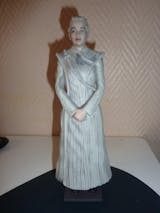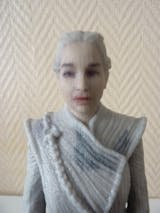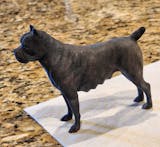Stylized vs Realistic Avatars: What Does Your VTuber Avatar Say About Your Brand?
Before your mic is even unmuted, your VTuber avatar starts doing the talking. Whether it’s a sleek, life-like digital twin or a pastel-haired catgirl with twinkling anime eyes, your avatar is more than just eye candy, it’s a personal brand in motion.

What you choose to show on screen shapes how people connect with you. Are you a grounded, authentic educator or a high-energy anime gremlin? Are you selling relatability or escapism? With every blink and expression, your avatar sets the tone for how viewers experience your content. In this guide, we’ll explore what your VTuber avatar style communicates about your identity, dig into the differences between stylized and realistic aesthetics, look beyond the usual binaries, and help you pick a style that supports your goals and resonates with your audience.
What Exactly Is a VTuber Avatar?
For anyone new to VTubing, let’s define the essentials.
A VTuber avatar is a digital model, 2D or 3D, that mimics your facial expressions and movements, allowing you to stream or record as a virtual persona. The avatar becomes the face of your channel, and thanks to facial tracking software, it reacts in real time to your emotions, gaze, and gestures.
Two Primary Formats:
- 2D Avatars: Typically built with Live2D, popular for their expressive anime aesthetic. Most common among stylized VTubers.
- 3D Avatars: Created in software like VRoid Studio, Blender, or Unity. More flexible in movement and VR-friendly, often used for realistic or hybrid designs.
While animation and performance matter, your avatar’s art style is the first signal your audience receives—and it plays a major role in branding.
Stylized VTuber Avatars: Fantasy, Expression, and Vibes
Stylized avatars are the bread and butter of VTubing. From exaggerated eye shapes to candy-colored hair and magical outfits, this design style thrives on creativity.
Common Traits:
- Anime or cartoon-inspired proportions
- Unique color palettes and iconography
- Fantasy or non-human features (animal ears, wings, tails, horns)
- Youthful, hyper-expressive facial animations
What This Says About Your Brand?
- You embrace character and world-building.
- You likely enjoy roleplay, gaming, or storytelling content.
- Your streams are personality-forward and emotionally expressive.
- Youthful, hyper-expressive facial animations
Strengths:
- Iconic branding: More memorable, especially with a signature look.
- Fan-friendly: Fans are more likely to draw, cosplay, or create content around stylized characters.
- Flexible storytelling: You can go full fantasy or sci-fi without breaking immersion.
Notable VTubers:
Ironmouse is known for her highly stylized demon girl avatar, full of exaggerated expressions that match her chaotic humor and energetic streaming style. In contrast, Shylily blends chibi-like softness with aquatic themes, creating a cute-yet-chaotic persona that resonates strongly with her community. Both showcase how stylized avatars can fuel memorable and emotionally engaging branding.
Realistic VTuber Avatars: Relatable, Immersive, and Polished
Realistic avatars aim to look and move like real people. They usually feature natural proportions, subtle lighting, realistic skin textures, and grounded outfits, though they can still incorporate stylized touches.
Common Traits:
- Realistic skin tones, body shape, and proportions.
- Subtle facial expressions and movement physics.
- Digital twins or human-like characters.
What This Says About Your Brand?
- You focus on authenticity, professionalism, or realism
- You’re aiming for a closer viewer-avatar connection.
- Your content might include education, interviews, or face-to-face style conversations.
Strengths:
- Immersive experience: More believable in mixed reality settings or VR.
- Professional appearance: Fits well for conferences, collaborations, or branded content.
- Subtle performance: Nuanced facial tracking can deliver powerful emotional resonance.
Notable VTubers:
CodeMiko stands out with her high-fidelity, mocap-powered, realistic avatar, blending tech innovation with chaotic humor and AI-driven interactions. Meanwhile, Raelice takes a softer approach—using a sleek, semi-realistic model to deliver music content and connect with her audience on a more personal, emotionally grounded level. Both show how avatar style can shape content and viewer connection in totally different ways.
More Than Two: Exploring Other VTuber Avatar Styles
VTubing isn’t limited to just “stylized” or “realistic.” In 2025, artists and creators are increasingly experimenting with cross-genre, niche, or unconventional styles that add new flavor to the space.
Other Common Styles Include:
Chibi / SD (Super Deformed): Chibi avatars feature oversized heads, tiny bodies, and ultra-cute aesthetics that instantly radiate charm. They’re a popular choice for VTubers who lean into humor, reaction content, or cozy vibes. Many creators use chibi forms as alternate “mini” personas or for specific scenes like alerts, intermissions, or emotes. Because of their simplicity and expressiveness, they’re ideal for light-hearted streams that don’t take themselves too seriously.
Pixel / Retro Avatars: Pixel or retro avatars tap into classic 8-bit and SNES-inspired visuals. They’re intentionally lo-fi, offering a refreshing aesthetic in a landscape dominated by polished 3D and anime models. These avatars are lightweight, easy to animate, and especially appealing to retro gaming audiences. For creators who love nostalgia or want to stand out through simplicity, pixel art brings an old-school charm that’s hard to ignore.
Abstract or Surreal: Abstract avatars break the mold completely. With glitch effects, faceless features, floating parts, or ever-changing textures, these models are often used by artistic or experimental VTubers. They work well for content that’s atmospheric, psychological, or boundary-pushing—such as horror streams, visual music sets, or avant-garde storytelling. These designs aren’t just visual—they evoke emotion and concept, often becoming a performance in themselves.
Furry / Kemono / Creature: Furry or kemono avatars feature anthropomorphic animal characteristics—wolf ears, dragon wings, cat tails, or full beastly designs. These models are popular in deeply connected subcultures where identity and self-expression take center stage. They often carry rich emotional storytelling and are rooted in community-driven aesthetics. For VTubers who want to explore non-human personas while staying highly expressive, this style delivers both depth and warmth.
Cyberpunk / AI-Inspired: Cyberpunk avatars lean into the future with neon lines, robotic limbs, digital masks, and high-tech elements. They’re a perfect fit for creators exploring music production, tech reviews, philosophical commentary, or digital dystopia narratives. These designs allow for complex personalities, alternate realities, and enhanced worldbuilding, often giving the viewer a sleek, futuristic experience that reflects our evolving relationship with technology.
Avatar Design Psychology: What Your Look Communicates?
Your design sends nonverbal cues about your vibe before you say a word.
Design Element Breakdown
Stylized VTuber avatars often feature exaggerated or idealized proportions, think oversized eyes, chibi bodies, or fantasy limbs. These proportions immediately communicate a whimsical or emotionally expressive vibe. In contrast, realistic avatars lean into human-like anatomy and scale, which creates a sense of familiarity and grounded presence. This choice often appeals to audiences looking for authenticity or professional polish.
Colors
Color plays a huge role in first impressions. Stylized avatars tend to use vibrant, symbolic palettes—neon hair, glowing eyes, bold contrasts—that evoke energy and emotion. These palettes are often rooted in anime or gaming culture. Realistic avatars, on the other hand, favor muted, earthy tones that feel mature, grounded, and often more adaptable to corporate or serious-toned content.
Expression Range
Stylized models thrive on wide emotional expression—big smiles, teary eyes, and dramatic reactions are part of the charm. They invite viewer connection through bold non-verbal storytelling. Realistic avatars opt for more nuanced facial movement, using micro-expressions, subtle blinks, and smooth transitions to convey emotion in a way that mirrors real-life human interaction.
Storytelling Style
The design also shapes your content’s tone. Stylized avatars often lend themselves to fantasy-driven, surreal, or meme-heavy narratives—perfect for playful, creative streams. Realistic models suit cinematic storytelling, grounded vlogs, or educational content. They bring a sense of narrative weight and professionalism that aligns well with more serious or documentary-style formats.
Target Audience
Stylized designs typically resonate with younger viewers, anime fans, and stream-heavy users looking for fun, expressive content. These avatars dominate platforms like TikTok and Twitch. In contrast, realistic avatars tend to attract adult viewers, tech enthusiasts, or those in corporate, tech, or educational spaces—especially on platforms like LinkedIn, YouTube, or even metaverse conferences.
How to Choose Your Look?
- Want to be perceived as fun, emotionally open, or imaginative? → Lean stylized.
- Want to seem trustworthy, professional, or tech-savvy? → Go realistic or hybrid.
Fan Connection: How Style Influences Community Building?
Stylized Models
Stylized avatars lean into bold, expressive visuals, think big eyes, exaggerated features, and strong personality. They're perfect for grabbing attention and instantly standing out.
- Get more fan art, memes, and inside jokes from viewers.
- Easily turn your avatar into plushies, emotes, or stickers.
- Build fast emotional connections with niche or anime-loving fandoms.
Realistic Models
Realistic VTuber avatars offer subtlety and immersion, creating a more grounded digital presence. They're great for creators who want to feel close and relatable.
- Build trust through natural, lifelike expressions.
- Ideal for professional streams, interviews, or brand deals.
- Appeal to non-anime or older audiences who prefer realism.
Neither is “better”, they simply attract different types of fans..
Future Trends: Where Avatar Styles Are Headed in 2025?
The future of VTuber avatars is anything but static—2025 is pushing boundaries where style, tech, and identity collide. The once-clear line between stylized and realistic is beginning to dissolve, giving rise to more hybrid and personalized aesthetics. AI-enhanced customization is already reshaping live interactions, with avatars dynamically shifting their appearance based on emotional tone or viewer feedback, no manual input required.
Meanwhile, early-stage phygital integrations hint at a future where avatars respond not just to digital signals, but to real-world touch and movement through wearables. Artists are also embracing hyper-custom brushes, creating shader-based art styles that defy traditional anime or photorealism boundaries. And in the spirit of creative fusion, mixed-media avatars—where 2D illustrations live inside 3D rigs—are becoming a fresh form of storytelling. In short? Avatar design is no longer just a look, it’s an evolving language.
Avatar Style Is More Than Aesthetic, It’s Strategy
Your VTuber avatar isn’t just a visual, it’s a voice, a personality, and a promise. It helps new viewers decide within seconds whether they want to stick around or scroll past. Stylized or realistic? Cute or cinematic? There’s no right or wrong. What matters is how your design supports your identity and your audience’s experience. So ask yourself: Does your avatar feel like you? Does it help you express the stories you want to tell? Because in VTubing, your look doesn’t just follow your brand, it leads it. And if you’re ready to bring that vision to life, TheVTubers.com offers custom avatar solutions that match your personality, vibe, and content goals, whether you lean fantasy, futuristic, or somewhere in between.






